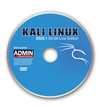
Lead Image © insima, 123RF.com
Security in the network with Kali Linux
Watchful Dragon
One of the most demanding tasks for network administrators is securing the LAN against attacks. In this context, admins must remember that infrastructure and data are threatened not only by external attacks but also by internal flaws that can cause significant problems.
Linux offers an almost endless variety of tools for performing tests and simulated attacks to help protect a network. However, the installation and configuration of individual tools is often time-consuming and complicated. The Kali Linux distribution specializes in testing and security solutions to take this work off your hands: It provides preconfigured versions of all the necessary tools out the box.
Getting Started
Kali Linux is available for various architectures as an approximately 3GB image [1]. After burning and booting the Live medium, the GRUB boot manager shows you several startup options for various Live modes or direct installation on disk. Forensic mode is a special feature here; it tells the Debian derivative to mount any external storage medium as read-only, which rules out any manipulation of storage devices that need to be forensically investigated.
Kali Linux boots to an inconspicuous Gnome desktop (Figure 1) that reveals a comprehensive menu structure after clicking on the Applications button in the panel bar at top left. In addition to the usual menu groups, three distribution-specific subgroups can be found: Electronics , Hamradio , and Kali Linux . The Kali Linux subgroup contains various security tools for any conceivable application scenario, Electronics is devoted to the Arduino single-board computer, and Hamradio contains the Chirp tool for programming amateur radios.
Buy this article as PDF
(incl. VAT)
Buy ADMIN Magazine
Subscribe to our ADMIN Newsletters
Subscribe to our Linux Newsletters
Find Linux and Open Source Jobs
Most Popular
Support Our Work
ADMIN content is made possible with support from readers like you. Please consider contributing when you've found an article to be beneficial.




